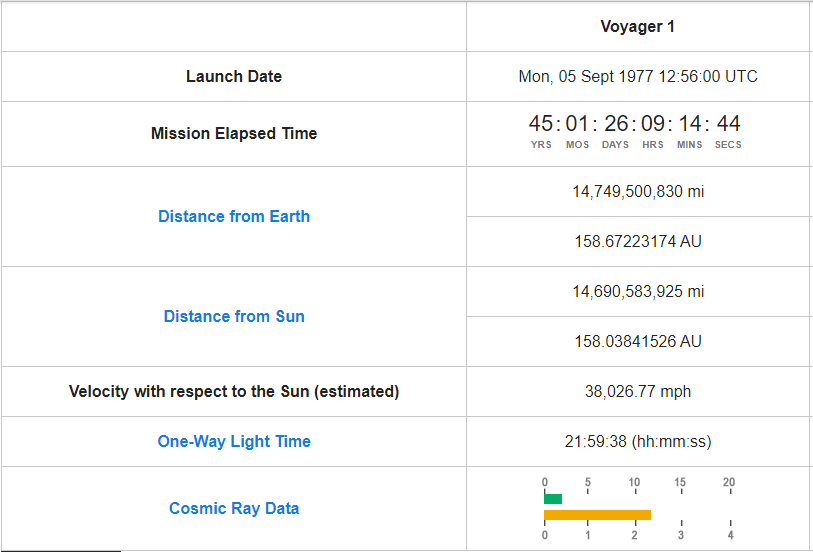Voyager 1 Picks Up Strange Sounds As It Approaches Alien Star-System
Voyager 1 is a space probe launched by NASA on September 5, 1977, as part of the Voyager program to study the outer Solar System and interstellar space beyond the Sun’s heliosphere. Launched 16 days after its twin Voyager 2, Voyager 1 has been operating for 45 years, 1 month and 25 days as of October 31, 2022 UTC . It communicates through NASA’s Deep Space Network to receive routine commands and to transmit data to Earth. Real-time distance and velocity data is provided by NASA and JPL. At a distance of 158.25 AU (14.710 billion mi) from Earth as of October 2022, it is the most distant man-made object from Earth.

The probe made flybys of Jupiter, Saturn, and Saturn’s largest moon, Titan. NASA had a choice of either doing a Pluto or Titan flyby; exploration of the moon took priority because it was known to have a substantial atmosphere. Voyager 1 studied the weather, magnetic fields, and rings of the two gas giants and was the first probe to provide detailed images of their moons.
As part of the Voyager program and like its sister craft Voyager 2, the spacecraft’s extended mission is to locate and study the regions and boundaries of the outer heliosphere and to begin exploring the interstellar medium. Voyager 1 crossed the heliopause and entered interstellar space on August 25, 2012, making it the first spacecraft to do so.Two years later, Voyager 1 began experiencing a third “tsunami wave” of coronal mass ejections from the Sun that continued to at least December 15, 2014, further confirming that the probe is indeed in interstellar space.
In a further testament to the robustness of Voyager 1, the Voyager team tested the spacecraft’s trajectory correction maneuver (TCM) thrusters in late 2017 (the first time these thrusters had been fired since 1980), a project enabling the mission to be extended by two to three years. Voyager 1’s extended mission is expected to continue until about 2025, when its radioisotope thermoelectric generators (RTGs) will no longer supply enough electric power to operate its scientific instruments
Source:WikiPedia
Infos Voyager 1 in 10/31/2022 Time in New York, NY, USA.(9:00PM)



The classic 1979 sci-fi horror film “Alien” was advertised with the memorable tagline, “In space no can hear you scream.” But, it did not say anything about humming.
Instruments aboard NASA’s Voyager 1 spacecraft, which ten years ago exited our solar system’s outer reaches, have detected a faint monotonous hum.
What is causing this cosmic hum?
Do not forget to share your opinion with us to provide you with the best posts !




0 Comments